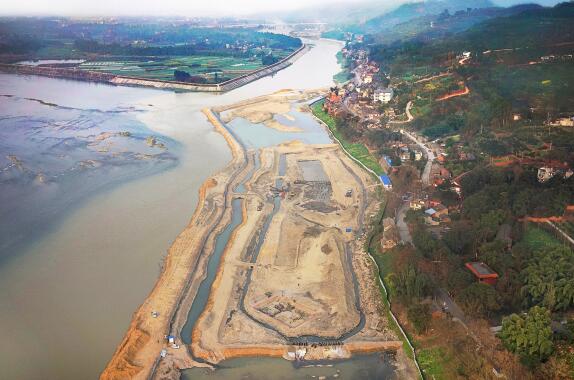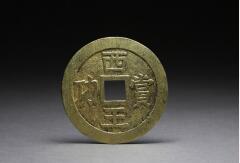Underwater excavation verifies ancient treasure comes from Zhang Xianzhong's sunken boats
From:Chinese Archaeology NetWriter:Date:2018-04-11
From January to April in 2017, Sichuan Provincial Institute of Cultural Relics and Archaeology with National Center of Underwater Cultural Heritage teamed up to conduct a joint archaeological excavation. The underwater excavation was carried out at the bottom of the Minjiang Riverbed in Pengshan District, Meishan City, Sichuan Province. Handreds of cultural relics that sank to the bottom of the River have been found. It was said to have belonged to Zhang Xianzhong, leader of a peasants’ uprising during the final years of the Ming Dynasty.
Distant view of the excavation area at Minjiang riverbed in the Pengshan district of Meishan, Sichuan province
The accumulation of the site was sand pebbles with fine sand, black brown, 3 to 6 meters’ thick.A large proportion of the relics were distributed around the riverbed’s scour channel, and a few was in the accumulation. In total, more than 30,000 pieces of cultural relics were drew out of water, mainly were made of gold, silver, copper, iron and other metal material. Including the investiture(cefeng)of Daxi Dynasty (which Zhang Xianzhong renamed Xijing (Western Capital) and declared himself king of the Daxi Dynasty) , gold and silver coins inscribed “Xi Wang Shang Gong”(which means King of Daxi Dynasty, Meritorious Honor, in order to honor those who made contribution to Da Xi dynasty), copper coin inscribed “Da Shun Tong Bao” (Zhang Xianzhong named his reign as "Da Shun" and produced coins of "Da Shun Tong Bao" as the official currency) and etc. Besides, ring, earring, hairpin, bracelet and other gold and silver jewelry; iron knife, iron sword, iron spear, iron arrowhead and other weapons; gold bowl, gold lock, gold button, gold thimble, silver bowl, silver spoon, silver chopsticks, copper mirror, copper lock, iron weight, iron straw and other utensil. The period was from the middle to the late of Ming dynasty, and from different areas, Henan, Shaanxi, Guangxi, Guangdong, Sichuan, Yunan, Jiangxi, covered more than half of China; and the rank was higher, including numerous cultural relics of Daxi State and royalty of the Ming dynasty.

Copper coin inscribed “Da Shun Tong Bao”

Gold coin inscribed “Xi Wang Shang Gong”

Coin mould
The excavation provide proof that the site is where Zhang and his army passed through this river on a ship carrying vast amounts of treasure , they fought against a local general and left countless treasures in his sunken boats, the archaeological assemblage also provided scientific evidence for uncover the mysterious history of legendary sunken treasure as well as, understanding the political system, social economy, material culture of the middle and late period of the Ming dynasty and the trend of social and history from the end of the Ming and the early of Qing dynasty.

Gold and silver investiture(cefeng)of Daxi Dynasty

Gold ring

